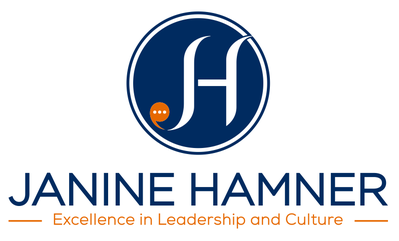
Accountability is one of the essential foundations of running a business. Unfortunately, some business leaders still fall short in this area. If you are in a leadership position and are struggling with accountability, this episode is for you! Seasoned entrepreneur Jeff Cohen talks about his practical guidebook, Count-On-Able, which aims to bring back accountability into your organization. He shares how to lift, shift, and empower leaders and their teams, dramatically increasing an organization’s performance while establishing a healthy work relationship within the organization. Tune in and find out what it means to be count-on-able and how you can achieve that!
GUEST: Jeff Cohen | LinkedIn, Facebook, Twitter, and Instagram | Visit his Website: C Level Round Table
Practical Guide: Count-On-Able
HOST: Janine Hamner Holman | [email protected] | LinkedIn, Facebook, Instagram, and Twitter |
—
Listen to the podcast here
What Does It Mean To Be Count-On-Able? A Conversation With Jeff Cohen
What am I paying attention to now? Volunteering versus being voluntold versus those times when we actively say, “Yes, you can count on me. It would be my honor.”
I had the opportunity to go and be with a dear friend who lives in the Bay Area. Unfortunately, she has stage four pancreatic cancer and is in her last weeks of life. Our time together was sad but also very rich. Sometimes people leave our lives and we don’t have a chance to say goodbye and to tell them in ways that they can hear how much they mean to us.
Towards the end of the weekend that I got to share with my friend, she asked me if I would get in touch with the people who will be taking her body after she passes from this life and be accountable or count-on-able for getting that safely to the crematorium, and for working with her children to have her ashes spread.
Clearly, if I had it all my way, my friend would not be dying. That would be my preference, thank you very much, and that is not an option on the table. Given the reality of the options that are on the table, I was honored to be asked and to be able to say, “Yes, you can count on me to do that. It would be my privilege.” This, accountability, is the area of expertise of today’s guest, Jeff Cohen so I am going to tell you a little about him.
I have known Jeff for many years and, like many relationships, we’ve fallen in and out of communication over the years. I follow what he’s up to and he follows what I’m up to, even when we’re not in touch. He reached out and we had an opportunity to reconnect so I thought it would be delightful to have him on the show.
Jeff is a seasoned entrepreneur. He has founded and grown a number of multimillion-dollar technology and manufacturing businesses. He gained national attention when he appeared on ABC TV’s Shark Tank season one. He was the first company that Shark Tank ran a success story on in season two. How cool is that?
Jeff has a new book called Count-On-Able, and he presents Count-On-Able as a new and rapid success framework that guides CEOs to make things happen. One of the things that is cool about this book is that it is highly readable. Each chapter is brief, between 3 to 5 pages, so that you can pick it up, read a chapter, put it down and voila, you’ve gotten something done in your day.
Jeff, I am thrilled to welcome you to the show.
I’m honored to be here. There’s a lot, I want to say about what you said about me before we do that. I want to acknowledge you for being there for your friend and being someone that she knew she could count on. I had tears forming in my eyes as you were sharing that story.
The issue that most organizations have is that accountability really takes two people. Share on XThank you for that wonderful introduction. It’s great to fall back into your world and want to share how it happened this time. I’m publishing this book and I had decided I was going to look for a show I could get on and, lo and behold, Janine is doing a show now! I had no idea, not only that, the show is directly related to what I talk about in my book. The world has lined up and it’s amazing.
For anybody who is wondering why the book is called Count-On-Able? If you think about it, and Janine shared this as she was sharing her story, there’s real pride associated with being able to say, “You can count on me.”
What I found, over the last several years of distinguishing the issues associated with the way businesses are run, is that from the very top, there’s this notion that everybody should be accountable. They should be accountable for writing them a paycheck every week so that they can be accountable to me. The issue that most organizations have is that accountability takes two people.
Generally speaking, there’s only one person in the company, in my opinion, that’s accountable. That’s the founder/CEO. If you take that job on, you are accountable for the lives of everybody that works for you and you are accountable to the board of directors or whoever it is that you report to. You are accountable.
There’s nothing good or bad about that. I learned in a program called the Team, Management, and Leadership Program how to embrace being accountable. In the real world, the last time most people heard the term accountable was on the news when someone was going to jail or there was a politician who they didn’t like.
If you consider the look on people’s faces when you say, “you are accountable for this,” you will know that they are resisting it. There are few people in this world who revere the word accountable. Since it takes two people to be accountable, it’s also their experience that they get a phone call at 4:00 on Friday from you saying, “Is it done yet?” when you’re in the middle of something else like talking to a customer or working on delivery.
When I took the Team, Management and Leadership Program from 2013 to 2015, I quickly got 50 CEOs, business owners, and entrepreneurs together. We started looking at what wasn’t working in our businesses and we found a recurring theme. The 50 businesses in various industries all have a common thread when things don’t work. How can that be? My business and industry are different.
You pick up the trash, and I’m a healthcare executive, how can we have the same problem?
What we found was people define effective communication differently. One way of defining it is I tell you something or I ask you something and you say, “Yes. I got it.”
You don’t know if I got it. I may have no idea. I have been making a grocery list in my head when you were asking me.
We all know whether you’re willing to admit it or not. When someone is talking to you, you’ve got this little bug in your head and it’s jumping up and down on your brain saying things to you. It’s distracting you. Sometimes, it’s loud. Sometimes not so much, but it’s there. To be certain that you got what I said, I must say to you, “I want to make sure we’re on the same page. What did you get?”
I was talking to one of my CEOs and I said to him, “What I hear you saying is we need to do this, this, and this.” He says, “Yes, got it.” I said, “Let me check in. What exactly did you get?” He had to think about it. He got that he was going to write an email and hadn’t clarified based on that what he got. That’s one of the things inside of communication that is often found to be ineffective.
I love what you’re pointing to there because sometimes in the world of business, as we all know, depending upon who our boss might be or what the organizational culture might be, if it’s a dog-eat-dog place, and I tell you something. I say, “Tell me what you heard.” You might think that I’m doing that to get you or I got you because I know you didn’t get it versus if what we are working on creating is an organizational culture where people feel supported and safe, what Amy Edmondson has termed psychological safety at work.
If we’re about trying to create a culture where people are learning and it’s okay to make mistakes, if you say to me, “What did you get? What did you hear?” My answer is crap. I don’t know. It’s okay. You can say it. It is a safe space for me to be honest and say, “I am doing that because it’s a social convention, you’re the boss, and you look good, but I don’t know what I’m supposed to have gotten.” Can you say that again for me please? I’m going to listen more closely this time.
The book is called Count-On-Able: A Practical Guide to Lift, Shift and Empower You and Your Team. I’m patenting this process. The patent is pending right now and open-sourcing it to the world so you can buy the book. There is something different about Count-On-Able versus some of the other great systems because there are some great ones like Gino Wickman’s Entrepreneur Operating System and Verne Harnish’s Scaling Up. I love those systems.
The bigger problem is that most business cultures have a penalty zone. Share on XThe thing I’ve noticed about those systems is they give you the frameworks. They say things like, “You want to have the right person doing the right job at the right time.” I don’t think there’s a single person in the world who would disagree with that. What’s missing is how do you know you have the right person? How do you know they’re in the right job? How do you know it’s the right time?
I don’t know if your system talks about this, but what do you do if you figure out they’re not the right person for the job? You figure out you’ve got some great people and they’re not in the right seats. You need to change the seats on the bus.
The first section of the book is stories about me, my life, and what compelled me to write this book. You’re going to hear all about the things I failed at because, in my opinion, I can tell you success stories all day long, and that might motivate you. When I tell you my failures and how I’ve overcome them, you’ll learn something. You might find it actionable yourself.
The whole second section, which is about half the book, is about the Trust Alignment Framework and every step in the process of the Next Level 90 business accelerator program that helps shift a culture from being accountable to being count-on-able. I tell you what I’ve done with over 300 companies that has them know they have the right person doing the right job at the right time or not. I give you the things to say to somebody when they’re behind schedule and not doing something.
The first chapter in the book is called Grand Theft Auto. It’s a time when I stole a car.
How old were you when you stole this car, Jeff?
I’m not going to tell you, but you can go to the website CountOnAble.com. There’ll be a little popup window. If you have a popup blocker, go to the contact page and send me a note. I will send you the first chapter.
It’s a great first chapter, everybody. I have already read it and it’s delightful. That’s why I was asking him that softball question.
In there, I discovered my number one trigger. I don’t think people recognize this, but we have something that triggers us. Sometimes we have more than one. My wife knows all of mine. They get used. All of them. The difference is that I focused my life so much on training around communication that now, instead of arguing with her, I’ve been able to get to where I can take a deep breath and say, “You triggered the hell out of me. Are you sure you want to talk about this now?” Believe it or not, sometimes the answer to that is still yes.

Count-On-Able: The issue associated with the way businesses are run is that from the very top, there’s this notion that everybody should be accountable.
Isn’t that the funniest thing?
It doesn’t matter whether it’s business or work. I’ve carried these triggers with me for decades.
Our triggers are our triggers. It doesn’t matter where we are in the world.
As a manager, you’re going to have somewhere between 4 and 8 people who report to you, generally speaking. Once a week, you’re going to trigger each one of those people. When you do, you’re going to get 20 to 30 minutes of reasons why and justifications. All you want to know is when am I going to get it? Am I going to get it? Are you the one that’s going to do it for me or should I find somebody else?”
The problem is that most people are generally people pleasers and here’s the bigger problem. Most of our business cultures have a penalty zone. I want you to get this. This is important. It’s one of the most important things you’ll take away from this conversation and from the book. Business is not hockey. We do not have a penalty box.
We think we do.
We don’t want to take our people out. I’ve got a client. I love these guys. Two business partners. One of them is a real sales driver. The other is more of a marketing guy and operations guy and a little more mellow. They are highly effective in working together as a team. I have been working with them for several years. The CEO would occasionally get mad at his partner and say something aggressive. The partner would check out for 3 or 4 days. I started talking to them about outcomes because when you have effective communication and you think about the outcome you want to have before you communicate, it’s possible to empower people instead of disempowering them.
When you’re empowering people, they take pride in what they’re doing and they jump forward. When you disempower them, they take off for three days or they become ineffective because they have this last conversation going through their head. It’s taking them over and you’re not creating leadership in the people who you want to grow. I get a phone call. It’s the CEO calling me and saying, “Jeff, I did it.” I ask, “What?” He responds, “I remember what you said about outcomes.” I say, “That’s a win.”
When you have effective communication and think about the outcome you want to have before you communicate, it's possible to empower people instead of disempowering them. Share on XHow did it go?
He told me, “I was about to yell at our COO and then I stopped talking.” I said, “What’s the outcome of that?” He said, “I’m still working.” Later, I get a phone call from the COO, “Jeff, you’re not going to believe this. You know that stuff you were saying about outcomes? It works.” He called on something. I was getting upset and then I stopped. I took a couple of deep breaths and change the subject. It was amazing.”
I know people have emotions. We all have them. When we communicate with them, we don’t get the experience of empowering people. You get to be the most important person, the most powerful person, the person who is feared and that’s not how you create leaders and leadership in an organization.
It is not how we create leadership in an organization. I want to dive in there a little bit. If we are coming from an emotion that is destructive, hurtful, we’re frustrated, angry, annoyed, or wherever we might fall on that spectrum, we’re not going to call forth the best in our people versus if we are in an emotion called grateful or appreciative, we may be coming from a place where we can empower our people. I want you to tease apart a little bit this idea coming from emotion as an inherently negative thing if that’s what you meant.
We all have emotions. We get to choose how we use them. Let’s face it. We can all be angry, sad, and happy. You get to choose how you want to be. If you let your emotions dictate how you want to be, you probably have a high turnover. You can’t pay your people to be around you or pay them enough money to be around that for long periods. You may have some people who are likely feeling stuck.
If you operate from a place where you’re able to distinguish a process and steps, instead of coming at it from, “I’m pissed off at you,” you can start coming at it from, “We have this priority action list.” In the book, I describe how you get to have a priority action list and the meeting schedule that you want to take with your people that would have your priority action list be operated effectively.
A lot of the other programs I talked about earlier have a quarterly meeting. They have maybe a monthly touchpoint, and every couple of weeks they might check in with the CEO. My program is for the whole company. I usually start with the CEO because they’ve got to buy in and want to make this culture shift in their company.
If they like it and they see that it can be effective, we bring in the senior executive team and we start rolling it out to their direct reports. What we start being able to develop based on the experiences that we have with our people is a list of tasks that we can count on people for and what we cannot count on them for.
Janine, you come from an HR background. I know you know this. We’re in there interviewing people and then the hiring manager gets involved. They gave you this job description to go and recruit for them. You found the perfect candidates and they interviewed 2 or 3 of them. They land on the one. They are excited. They’re in that final interview. The person knows this is the final interview. The person wants the job at this point. It doesn’t matter why, whether they need it, want it, or like it. The hiring manager wants them and they know they have some gaps on their team. They say to this person they’re about to hire, “I love that you can do all of this stuff. Can you also wash the dishes?”

Count-On-Able: If you take that job as a CEO, you are now accountable for the lives of everybody who works for you and the board of directors or whomever you report to.
If I want that job, I’m going to say, “Yes, I’m the best dishwasher you’ve ever met in your whole life.”
That’s what my wife did with me, which is still the same for 2, 3 or 4 days until I get around to them. I eventually wash them when the sink is full. Notice, that’s what occurs when you hate doing something. It doesn’t cater to your strengths. I’m not good at it. I’m not a good dishwasher, but we do that to people all the time.
I’m going to turn it around for a second, Janine, because this is perfect for you. What would you call it when you have an employee that’s doing a job that caters to their strengths that they love doing and they’re good at? What would you say?
I would call them a perfect fit, an all-star performer, and a high achiever. They’re going to keep performing exactly as I need them to perform because they’re on exactly the right job.
They’re your dream employee. Do you know what they would call it? They would call it their dream job. The thing is most organizations do not have a way of assessing where people are at, at any point in time, even when they have an annual review process. This is not in the book, and I promise I will write about it in my next book. I can tell you stories about how I grew up.
I went to work at IBM in the tech explosion. I got offered a job by a fast-growing internet company. I killed it there and I got fired when they were going down the tubes. I went to work for another company and I started my own business. I decided, “We grew from 0 to 50 people. We’re on track to do $20 million in revenue. This is under three years. It was a run. I loved that.” 2007 came and every single one of our clients at the same time, and we’re all Fortune 500, Global 2000 companies, said, “We love you guys but now we’re putting everything on hold.” “Until when?” “We don’t know.”
I wound up going out of business and it killed me. I had to shut the company down. I started this little granola bar company, I got on Shark Tank with it, and we started having some fun with that. Time went on, there was no money in the food business and I needed to make some money. I called my old boss from IBM and she helped me get back in and nothing made me more ecstatic than doing that except I wasn’t CEO. I was calling on all my big Fortune 500 accounts like Intel, IBM, Kaiser, Cisco, and other companies. That was my jam and I love doing that, but I wanted to be CEO.
They hired me because of my experience in the past. I went from that after several years to another sales gig to a third one because I didn’t want to be selling. I wanted to be operating, growing, and being the entrepreneur that I am. None of them had a mechanism to identify that. No one ever asked me what I wanted. They all hired me because of my experience. I can do that job. When you take someone who you’ve hired for a job and say, “Can you wash dishes for us?” You’ve now taken your A player and made them a B player because they’re going to disappoint you from day one. People don’t realize that, and they do it all the time.
As you and I continue to age, we’re all aging and we are about the same generation, 75% of the workforce will be Millennials and Gen Zs. They care about a couple of core things. One of the core things that they care about is, “Am I treated as a whole human being and not a producer of work? Does somebody care about my progression in the job? Do I understand how my job connects up to the purpose of the organization and how the purpose of the organization is helping to make the world a better place?” Their key metrics around what they’re looking for in a job are different from the key metrics of what I was looking for in a job when I started out. What you’re pointing to is exactly the things that these generations coming up in the workforce care about.
It's really hard to have trust if you're out of alignment. Share on XDo you know what that’s called? That’s called the Alignment Framework.
I know that you’ve got a couple of key frameworks, and I want us to get to talk about those before we have to close out for now.
Let me give a brief view into what the Trust Alignment Framework is because what that looks like is there are three frameworks in the book. There are the Trust Framework, and Alignment Framework, and when you put them together, it changes a little bit because you either have trust or you don’t, but I promise it’s always being questioned. You either know what the CEO wants or you don’t, and you’re doing your job.
My take on it is when it comes to alignment, if the CEO and the team know the leader’s vision, there are priorities that are outlined by the CEO to focus on and they’ve done an effective job of communicating. You and I were talking about that earlier. It’s not just, “I got it.” It’s knowing what it is that somebody got. I have a great lesson in the book about how to know you’re communicating effectively. It’s possible. There’s alignment. It’s like you have five executives.
Instead of being in sports cars going on different freeways in different directions and landing in San Francisco, Las Vegas, Salt Lake City, and Wyoming, they’re all on their way to San Diego together because that’s how they support each other and there’s trust. It’s hard to have trust if you’re out of alignment, because what can you trust? I often hear people saying, “I trust my boss or my CEO.” I ask them, “What do you trust them for? What is a good answer to that?”
To have trust, there ought to be some shared values in the organization. You ought to know what the abilities of people are. For both of these frameworks, effective communication is important. If you have all that, none of it matters if you lead from your emotion and don’t think about the outcome you want before you speak. That’s important.
I invite you guys. If this speaks to you and you’re a company with 20 to 200 or more employees, and you want to have a conversation, reach out to me on my website, and send me a note. I’ll be happy to make some time for you and get engaged because this is the stuff that as an owner of a business, we’ll have you have your company run and grow with and without you. Have your family have you for 100% of your vacation instead of you working 2 to 4 hours a day. That goes for your executives too, they are the most important people in your organizations and haven’t trained others to lead. This program will have you create leaders that create leaders and leadership so that you can have a life.
It is critically important these days. The reality is that 90% of managers have never been taught how to manage effectively. I am a huge advocate of training managers. Usually, people become managers because they were great frontline performers in doing whatever it was that they were doing and they became a manager. Ninety percent of people have never been trained in how to manage effectively.

Count-On-Able: None of it matters if you lead from your emotion and don’t think about the outcome you want before you speak.
This is a coaching program. If you have a coach, you can do it with them because everything is in the book. When you come to the website, you’ll be able to download all the forms and everything. It’ll all be there when we launch the book on June 14th, 2022. In the meantime, if you’re interested and want to have a conversation to learn about it more, I would love to have that with you.
Janine, I know we’re coming to the end of our time. If you don’t mind, I’d like to share two things. One is first off, I love you.
Thank you. I love you too, Jeff.
I’m grateful you invited me. I’m excited to reconnect with you and Jonathan.
Secondly, come to my website, CountOnAble.com. If you don’t see the resources that you need there, look me up on LinkedIn or Instagram. Type in ‘count-on-able.’ There are few references. It’s a new word. It’s rarely used. I promise you’ll find me. I’ll leave you with this, stop being accountable. Be count-on-able.
Thank you for your humor and your deep love of this work. Thank you for your knowingness about the power of talking about when we have failed and what the power is to create lessons in that.
When I’m working with clients, I’m always talking about when we’ve created a culture in which it is not safe to fail. We’ve also created a culture in which it is not safe to learn. I appreciate your embracing and walking the walk of that. You are a delight. I am happy to have had the opportunity to get reconnected and connected in some deeper sorts of ways. Thank you for your friendship, and wisdom, and for joining us here.
What an enormous acknowledgment. Thank you, Janine. I’m extremely grateful.
Remember, great leaders make great teams. Until next time.
Important Links
- Jeff Cohen
- Count-On-Able
- Team, Management, and Leadership Program
- Entrepreneur Operating System
- Scaling Up
- LinkedIn – Jeff Cohen
- Instagram – Jeff Cohen
- https://www.Facebook.com/JeffCohen123
- https://Twitter.com/JCSocial
- https://www.YouTube.com/results?search_query=Jeff+Cohen+Count+On+Able
About Jeff Cohen
 Jeff Cohen is a seasoned entrepreneur having founded and grown multimillion dollar technology and manufacturing businesses. He gained national attention when he appeared on ABC TV’s Shark Tank, Season One. He was the first company that Shark Tank ran a success story on in Season Two. Jeff presents Count-On-Able as the new and rapid success framework that guides CEOs to make this happen.
Jeff Cohen is a seasoned entrepreneur having founded and grown multimillion dollar technology and manufacturing businesses. He gained national attention when he appeared on ABC TV’s Shark Tank, Season One. He was the first company that Shark Tank ran a success story on in Season Two. Jeff presents Count-On-Able as the new and rapid success framework that guides CEOs to make this happen.






